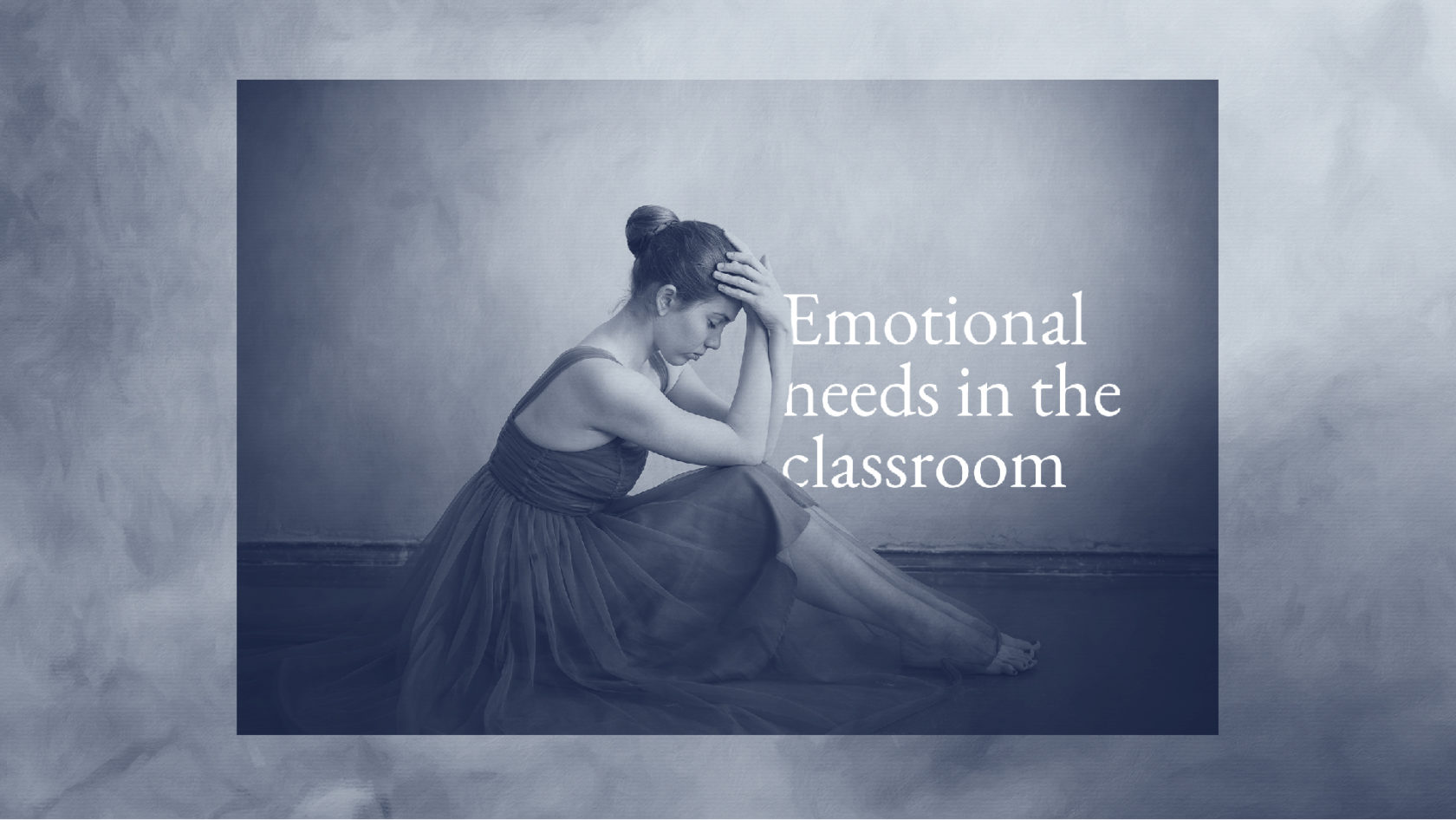Ballet dancers are artists and art reflects humanity. Therefore, ballet dancers must be highly in tune with their own humanity in order for their art to resonate. Most people drawn to pursuing the arts experience feelings in a profoundly deep way. The world around them seeps in and causes emotions to kind of firework about inside. This spurs on ideas and concepts and brilliant pieces of expression are born.
Yet…
The ballet class, by nature, is not an overly warm environment. Not because dancers are cold individuals, but because we go to ballet to work. Work hard. Time is limited, and much needs to be done. Class is methodical, corrections are everywhere, praise is sparse, and competition is high—even if it is not a “competition” studio. Ballet training is not the place for emotions.
Or is it?
Identify Our Needs
We all have our own threshold; needing our needs to be heard, understood, and met. Some of us have higher needs than others. But we all have them. No matter how thick the skin is, the needs still remain; under the surface, with the potential to become sinister and poisonous.
Ballet class is an ideal place to identify and label these needs because so much of our inner selves is on full display in the studio. Fears, passions, insecurities, strengths, dreams, dislikes—just to name a few. The trick is to learn how to use our emotional needs to our advantage as opposed to allowing them to take over and drive our experience.
So, how do we help our students navigate the world inside their heads? Especially those students with exceptionally high emotional needs?
Get The Feelings Out
Encourage your students to express the feelings in some way, be that journaling, choreographing a dance, talking with someone, etc. The longer the feelings remain suppressed, the more damage they do.
Tell Your Teacher
Students never want to look weak in front of us yet they allow themselves to fail in front of us every single day. Asking them to go a step further and tell us their secrets—it’s a big ask to say the least. But it is the only way for us to know how to help them. We don’t need to know it all of course, but we need to know things like . . .
“When I look at myself in a leotard, I feel ugly and gross”, or
“When I forget a combination, I feel stupid and like I am the worst one in class”, or
“When you spotlight me in class, I just want to disappear and never be seen”, or
“I love ballet and I love performing, but when I am in ballet class I am miserable and want to quit.”
Thoughts like this are things teachers need to know because they will inform how we choose to interact with that student. It will help us teach more wisely.
Make Your Weakness Your Strength
High emotional needs are often seen as weaknesses. I disagree with this idea. The more we feel, the more authentic our art. The better we become at identifying and labeling our feelings, the more organized our thoughts become. The more honesty and transparency we put into our daily lives, the braver we become with facing challenges. Emotional needs, when embraced and uplifted, bring amazing results to ballet dancers—both technically and artistically.
Related Articles


Comments
No comments for this post.
Add Comment